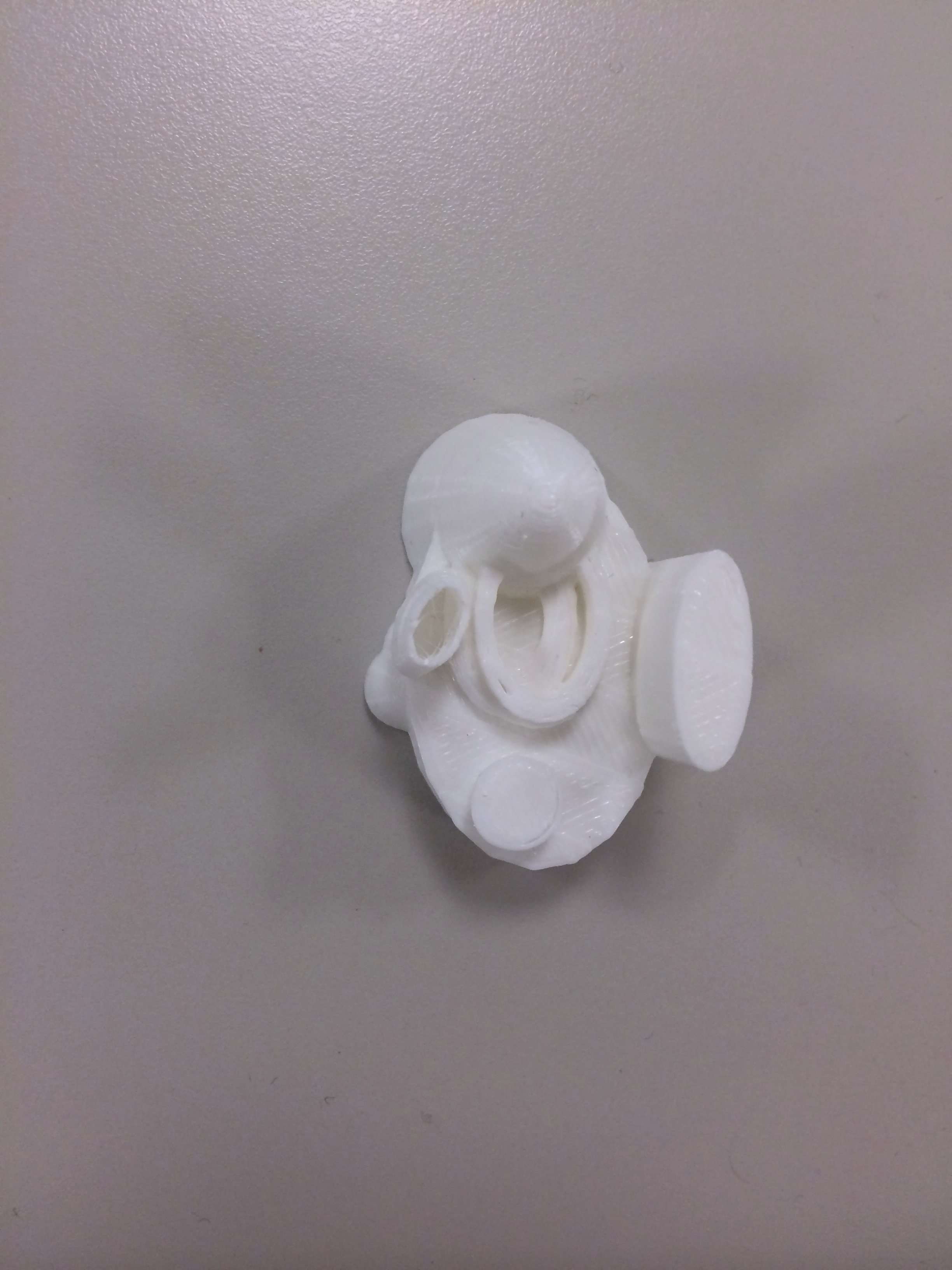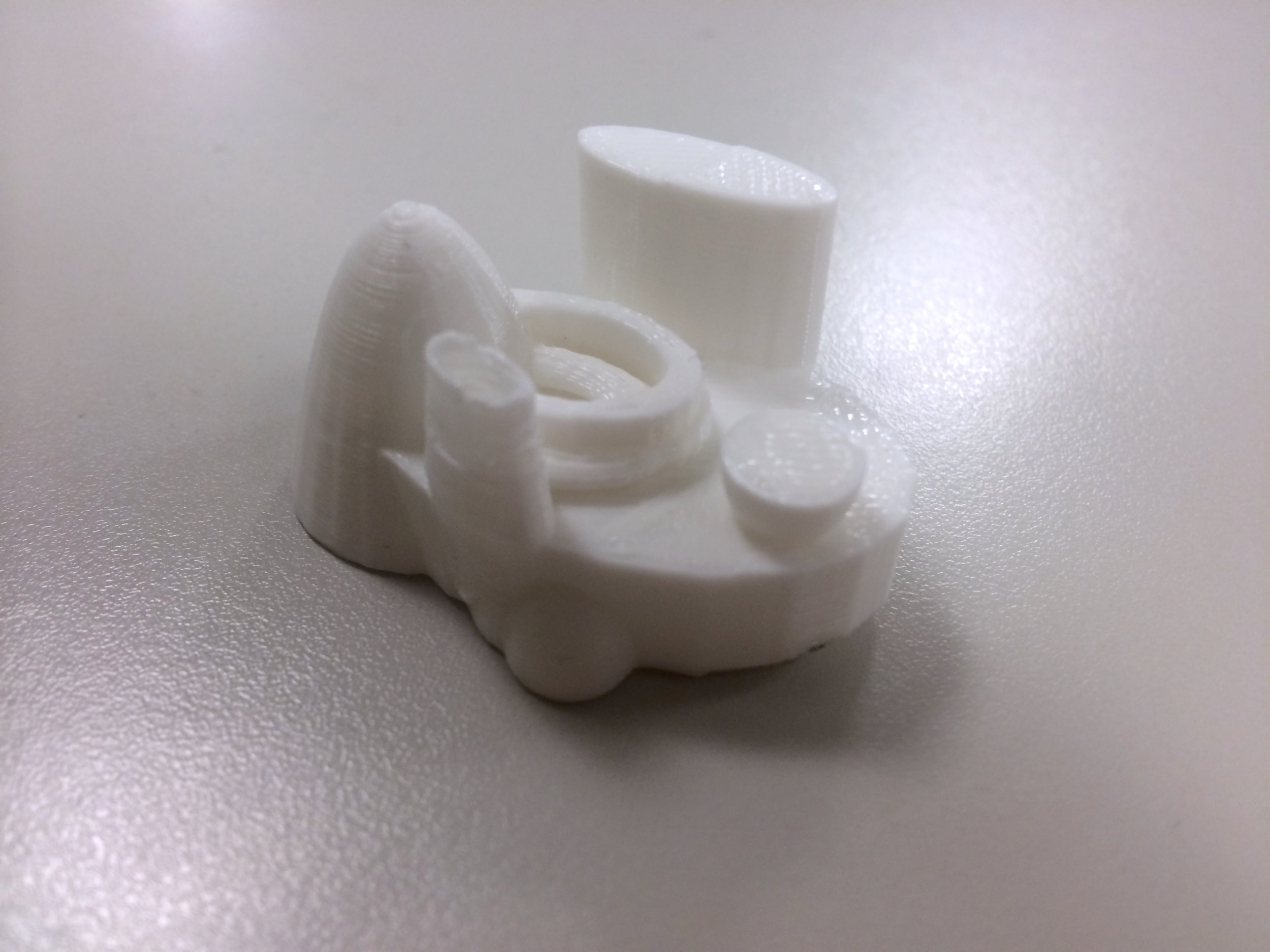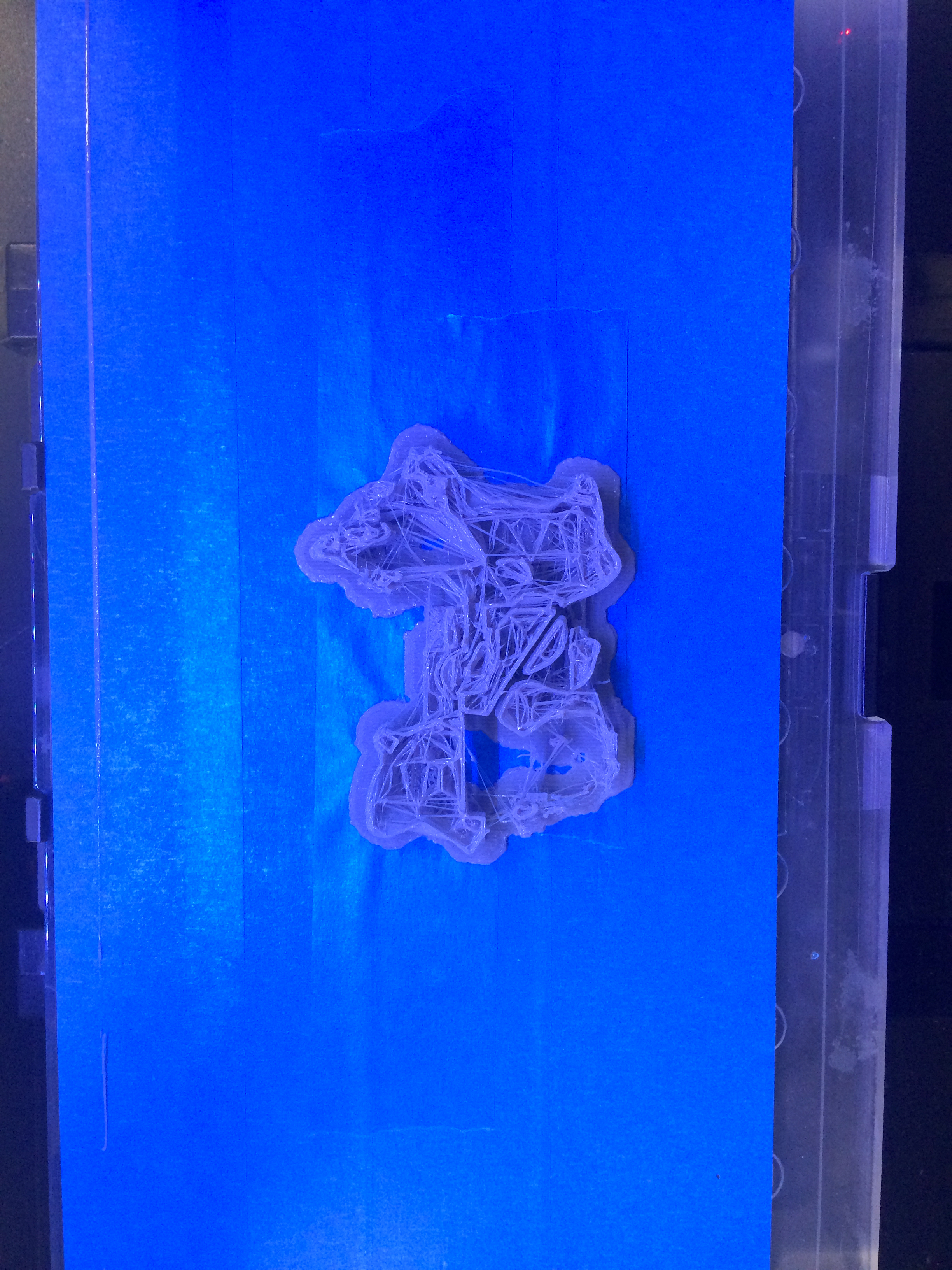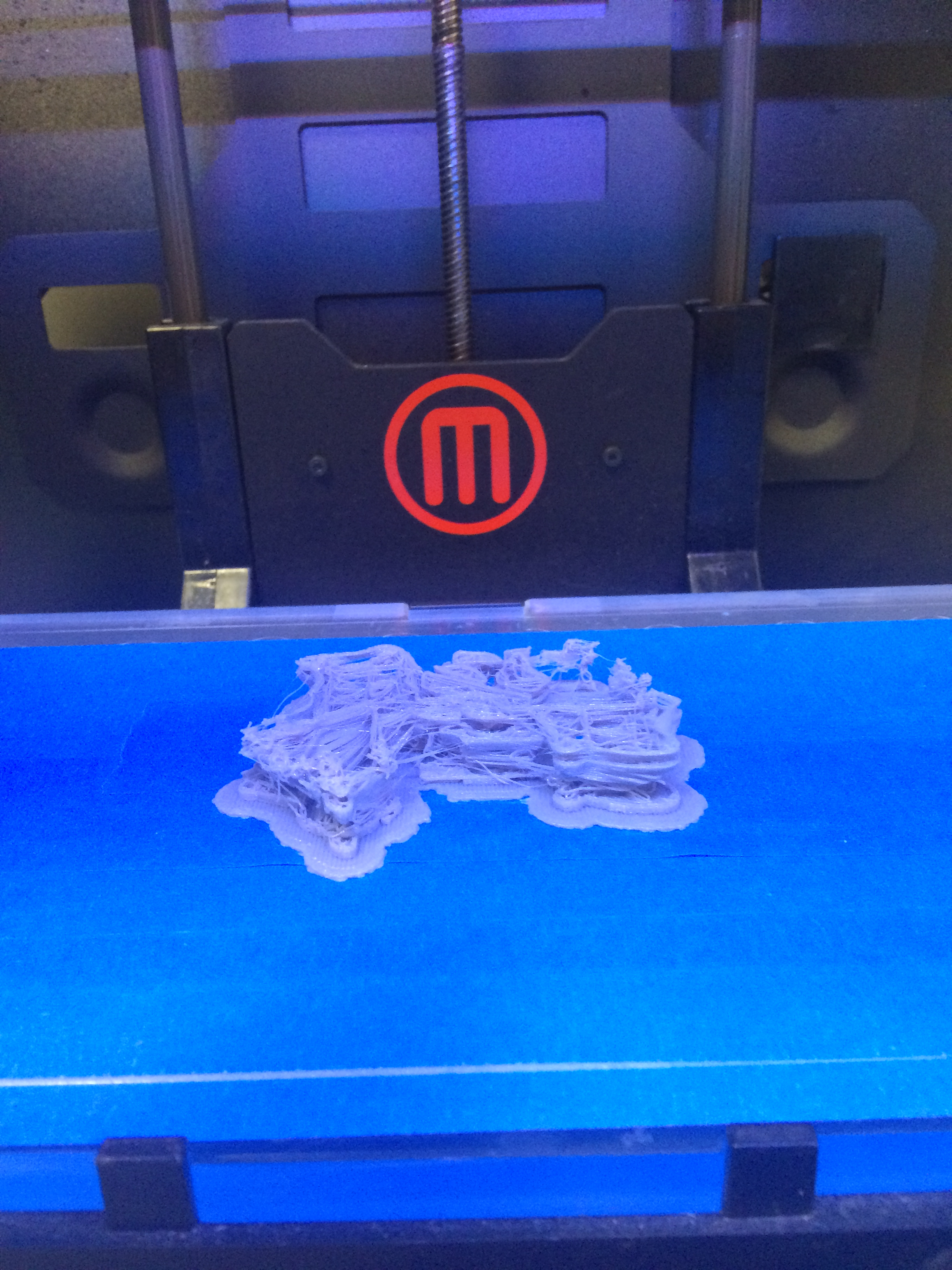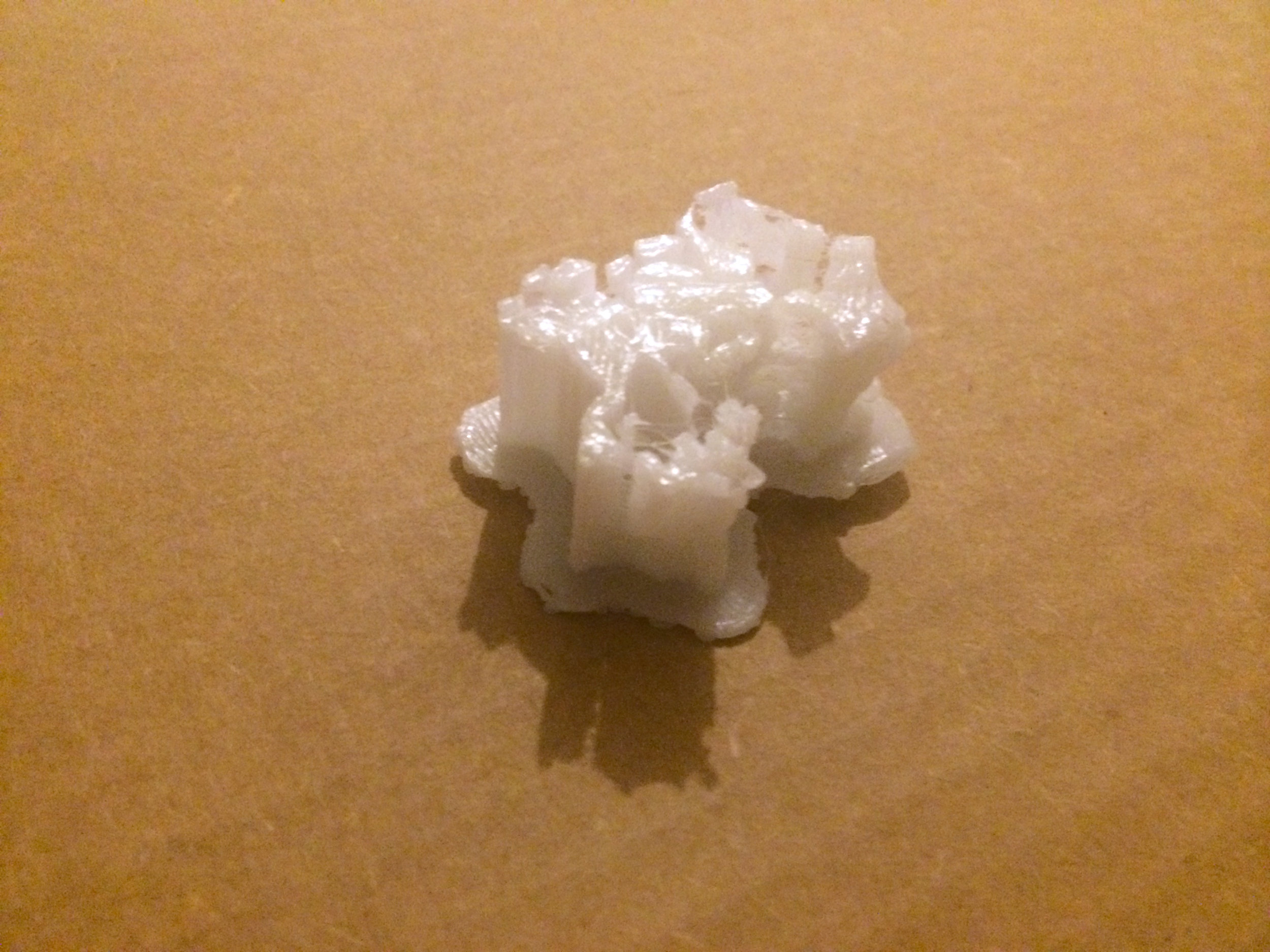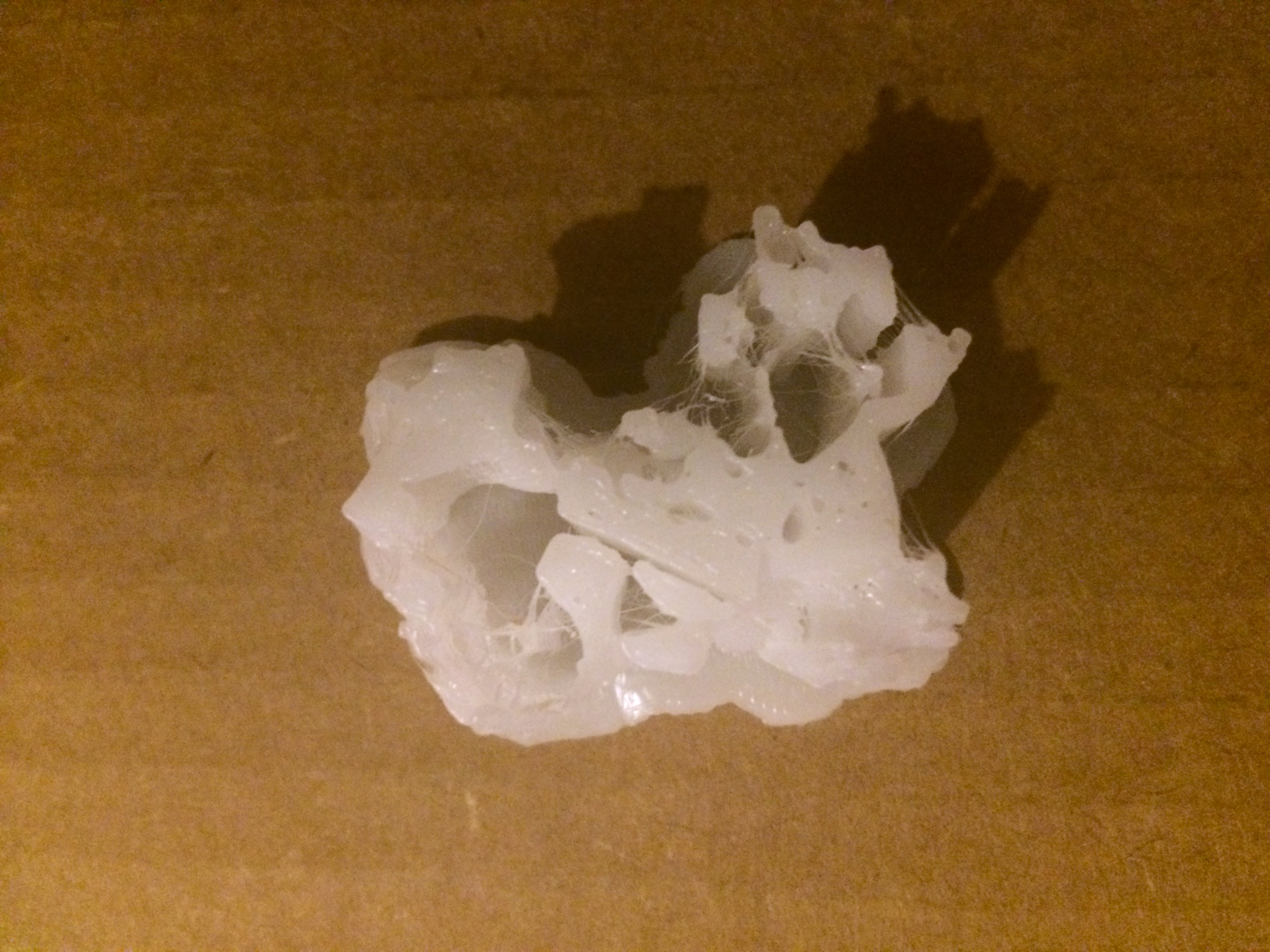My first experiments with 3D modeling/printing were a mixed bag of successes and failures, all of which upon reflection feel positive, for a beginner's encounter with the protocols, tools and parameters of the relatively new medium. I am familiar with many promising artist applications for 3D printing, and many other applications impacting a range of manufacturing approaches with implications for many fields, medical to military to industrial and so on. In my humble initial efforts, I encountered mechanical failure and the failure of my own design to translate to 3D processes, but my in-class attempt (plus seeing Bert's excellent pieces) gives me hope that I can improve and refine a practice. Certainly, I can visualize a number of future projects that involve 3D printing. I find one of the more artistically compelling - and theoretically rich - usages of 3D printing emerging for representational portraiture. However, the potential for 4D+ art with 3D model/print elements is probably where I will venture next. As for inclusion in curricula, as with digital animation, laser-cutting, etc., I will defer to educators, for now. Most digital print technologies share characteristics that shoestring programs might find daunting: costs; maintenance; fragility; and so on. Wired, computer-based technologies also tend to re-organize power toward the technologist. Is this good for schooling?

